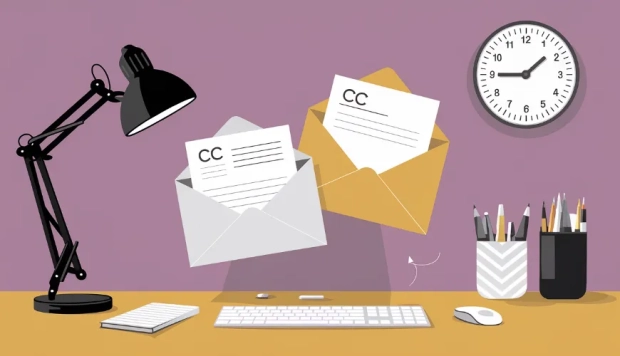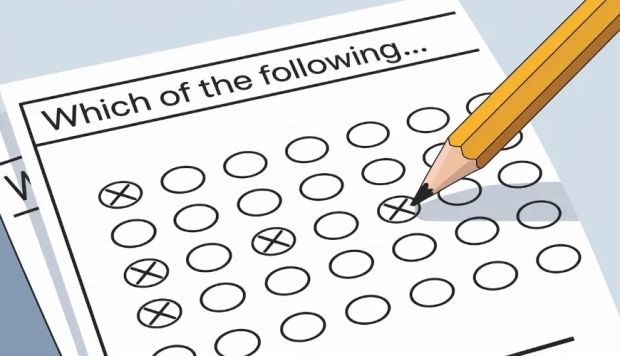What Is Greylisting?

Greylisting is like having a superhero bouncer for your emails. Picture this: your email door has a guardian who briefly says, "Wait a moment!" to new or unfamiliar senders. This gives your email system time to double-check if everything is safe before allowing the message to enter. It's not about being mean; it's about keeping the bad guys (spam) away. Greylisting acts as a shield, defending your email world from unwanted intruders and ensuring your inbox stays clean and secure.
In simpler terms, greylisting helps your emails stay safe by pausing messages from unknown sources. It's like a security measure that prevents spam from flooding your inbox. So, the next time you wonder why an email took a moment to arrive, remember that it's just your email's way of making sure everything is secure before letting it in.
How Greylisting Works
Three-Step Mechanism
Greylisting operates in three simple steps. First, when a new sender tries to deliver an email, the system says, "Hold on!" and temporarily rejects it. Second, it notes down the details of the rejected email. Finally, if the email is legitimate, the system allows it in when the sender retries. It's like a security checkpoint making sure only the good guys get through.
Temporary Rejection and its Significance
Temporary rejection might sound a bit daunting, but it's a crucial part of greylisting. It's like your email system saying, "I need a moment to check if you're a friend or a foe." This temporary pause helps in filtering out potential spam because spammers usually give up after the first try, while legitimate emails persist.
Understanding how greylisting works is like knowing the secret handshake to keep your inbox safe. It's a smart way to make sure only the emails you want can get through, and the rest are stopped at the door.
Advantages of Greylisting
Reduction in Spam
Greylisting acts as a powerful shield against spam. Temporarily rejecting unfamiliar emails, gives spammers a tough time. Since most spammers don't bother trying again, your inbox stays free from unwanted clutter. It's like having a spam filter that not only catches but also blocks those annoying messages from reaching you.
Resource Optimization - Impact on Server Load and Bandwidth
Greylisting isn't just about keeping your inbox tidy; it's also a superhero for your email server. By pausing and carefully inspecting incoming emails, it reduces the load on the server and saves bandwidth. It's like having a smart assistant that ensures your email system runs smoothly without unnecessary strain.
Understanding these advantages shows how greylisting isn't just a defender against spam but also a supporter of a more efficient and streamlined email experience. It's the unsung hero working behind the scenes to keep your inbox clean and your email system running smoothly.
Greylisting Potential Drawbacks
Delay in Email Delivery
One downside of greylisting is a temporary delay in email delivery. When your email system says, "Wait a moment!" to unfamiliar senders, it can extend the time it takes for the email to reach your inbox. It's like the postal service holding a letter briefly to ensure it's safe before delivering it to your doorstep.
While the delay is a security measure, it might be frustrating for some users. Understanding that this brief pause is for your email's safety can help ease any concerns. It's like a small trade-off to ensure that only the good stuff gets through.
Misunderstandings About Greylisting
Greylisting might seem mysterious, leading to misunderstandings. Some may think their emails are being rejected permanently, causing confusion. Clarifying that greylisting is a temporary pause for security purposes helps users appreciate its role in keeping their inbox secure. It's like demystifying a friendly but often misunderstood guardian.
Highlighting these potential drawbacks provides a balanced view, acknowledging the slight inconvenience while emphasizing the importance of greylisting in maintaining a secure email environment.
Greylisting vs. Other Email Filtering Methods
Understanding greylisting becomes even clearer when we compare it to other email filtering methods. Whitelisting is like having a VIP list where only approved senders get through without any checks. On the other hand, blacklisting blocks known spammers but might miss new ones. Greylisting strikes a balance by temporarily pausing unfamiliar senders, giving them a chance to prove their legitimacy. It's like having a cautious but fair gatekeeper for your inbox.
Exploring these comparisons helps demystify different email filtering methods and showcases how greylisting's approach provides a dynamic and effective way to keep your inbox secure. It's about finding the right balance between being too restrictive and too lenient, ensuring a safer email experience for users.
Understanding Greylisting as End-Users
Knowing that greylisting adds a temporary delay to email delivery, it's essential for users to understand this security measure. Offering practical tips, like being patient when an email takes a bit longer, can help users navigate the brief waiting period. It's like knowing that a little patience ensures a safer and cleaner inbox.
Encouraging users to see greylisting as a digital guardian enhances their appreciation for the added security. Emphasizing that the temporary delay is a small price to pay for a more secure email environment fosters a positive outlook. It's like having a reliable security system at home; a short delay ensures everything is safe before welcoming it in.
Empowering users with knowledge about greylisting helps them not only cope with any delays but also appreciate the role it plays in maintaining a secure email space. It's about turning a potential inconvenience into a proactive step towards a safer online experience.
Conclusion
In wrapping up, let's revisit the superhero of our email world – greylisting. It's not just a random delay in your inbox; it's a deliberate security measure, ensuring that only trustworthy emails find their way to you. By briefly pausing unfamiliar senders, greylisting acts as a gatekeeper, filtering out potential spam and keeping your digital space clean.
It's important for users to recognize the value of greylisting in maintaining a secure email environment. While the brief delay might seem inconvenient at times, it's a small price to pay for a spam-free and secure inbox. So, next time you experience a momentary delay, remember it's your email's way of ensuring your digital space remains a safe and welcoming haven.
In conclusion, greylisting is not just a feature; it's a digital guardian working tirelessly to protect your inbox from unwanted intruders. Appreciating its role adds a layer of understanding to your email experience, making it a more secure and enjoyable part of your online life.



